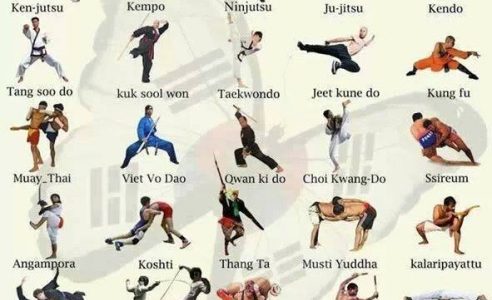When it comes to picking a fighting styles design for your youngster, the alternatives can really feel frustrating. On one hand, you have the standard self-control of Martial arts, soaked in centuries of history and tradition. On martial arts famous , there's the high-flying art of Taekwondo, known for its dynamic kicks and acrobatic motions. And let's not forget the hurting and protection strategies of Judo and Jiu-Jitsu.
With so many options, exactly how do you decide which style is right for your youngster? Well, bend up because we're about to take you on a trip via the various styles of youth fighting styles, exploring their distinct features and benefits, inevitably aiding you make an enlightened choice that fits your youngster's passions and goals.
Karate: Conventional Martial Arts
If you have an interest in learning a conventional fighting style, martial arts is an excellent choice. With its roots in Japan, karate focuses on striking methods utilizing strikes, kicks, and knee strikes. website link -control, regard, and protection skills.
In karate, you'll learn numerous kinds or katas that incorporate various techniques in a precise and flowing way. These katas not only boost your physical coordination yet also assist develop mental focus and concentration.
Karate training entails both individual practice and partner drills, allowing you to improve your speed, stamina, and dexterity. Furthermore, martial arts provides an outstanding exercise, improving cardiovascular fitness and muscle mass tone.
Whether you're a novice or a knowledgeable martial artist, martial arts supplies a difficult and gratifying journey in the direction of self-improvement and personal development.
Taekwondo: The Art of Kicking
Taekwondo is a dynamic fighting style that specializes in high-impact kicking techniques. It's recognized for its emphasis on speed, dexterity, and adaptability. When exercising Taekwondo, you'll discover a vast array of kicks, including roundhouse kicks, front kicks, side kicks, and spinning kicks. These kicks are carried out with accuracy and power, making Taekwondo a thrilling and aesthetically remarkable fighting style to view and practice.
The training in Taekwondo not just focuses on developing strong leg muscular tissues yet additionally on improving overall body coordination and equilibrium. Through regular practice, you'll boost your endurance, versatility, and confidence. Taekwondo isn't almost kicking; it additionally integrates hand strikes, obstructs, and different self-defense methods.
It's a well-rounded fighting style that offers a great physical workout while showing technique, regard, and self-constraint.
Judo Vs Jiu-Jitsu: Hurting and Protection
After checking out the art of Taekwondo and its focus on high-impact kicking strategies, let's now shift our focus to the contrast between Judo and Jiu-Jitsu, 2 fighting styles that specialize in grappling and self-defense.
Judo, which originated in Japan, focuses on utilizing an opponent's toughness and momentum versus them. It highlights throws, takedowns, and immobilization methods. Judo shows pupils just how to make use of utilize and method as opposed to depending only on physical strength.
On the other hand, Jiu-Jitsu, which came from Brazil, focuses on ground battling and entry holds. It shows students how to safeguard themselves against bigger and stronger opponents by using joint locks and chokes.
Both Judo and Jiu-Jitsu work fighting styles for self-defense, however Judo puts more emphasis on throws and takedowns, while Jiu-Jitsu focuses on ground combating and submissions.
Conclusion
So, after exploring the different designs of youth martial arts, you now have a much better understanding of what could be best for your kid.
Whether they choose the typical discipline of Martial arts, the high-flying kicks of Taekwondo, or the hurting and protection methods of Judo or Jiu-Jitsu, there's something for each little warrior.
Just keep in mind, while they're mastering their actions, you might want to buy some added furnishings extra padding. Your living-room might never coincide once more.
